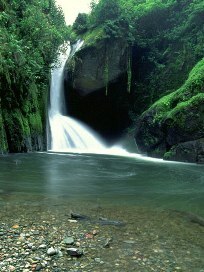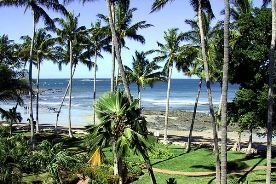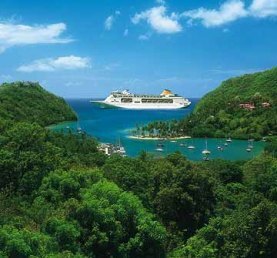Costa Rica is a country located in Central America, is located between Nicaragua (north) and Panama (south), is bathed by the Pacific and Atlantic oceans.
This country was discovered by Christopher Columbus in 1502. Costa Rica achieved independence on September 15, 1821, and, in 1824, incorporated into Mexico. That same year it became part of the Central American Federation and disintegrated in 1838. Democracy itself was consolidated after the 1890 elections, which placed José Joaquim Rodriguez in power.

The territory of Costa Rica is internally divided into provinces, more precisely seven, they are: Guanacaste, Alajuela, Heredia, Cartago, San José, Limón and Puntarenas, as well as other subdivisions in 81 cantons and 463 districts.
The area occupied by the country consists of mountain ranges that cross the territory from northwest to southeast, parallel to the coastal plains.
As for the climatic composition, it is constituted by the tropical and subtropical climate, cooling in the altitudes. The climate has a characteristic of presenting a dry season from November to April and a rainy season from May to October. The predominant vegetation cover in the country is the humid tropical forest and a restricted dry tropical forest.

Costa Rica's native forests are home to great wealth of plant species, such as ebony, raft, mahogany and cedar, oaks, cypresses, mangroves, ferns, gourds, ceps and palms. It is possible to find about 1,000 species of orchids, the central part of the country concentrates the largest amount of this plant on the planet.
Do not stop now... There's more after the advertising ;)

The fauna includes animals such as puma, jaguar, monkey, coyote, armadillo, in addition to approximately 850 species of birds. Costa Rica is home to at least 205 species of mammals, 850 species of birds, 169 species of amphibians, 214 species of reptiles and 130 species of freshwater fish. The natural resources present in the territory are quite diversified, even with a relatively small area, it accounts for 5% of all biodiversity.

Costa Rica's economic sector is mainly linked to tourism, agriculture and electronic products with production destined for export. A positive factor in this country is that it is able to combine economic and social development with environmental preservation.
General information about Costa Rica
Republic of Costa Rica
Capital: San José.
Official language: Spanish.
Independence: from Spain – September 15, 1821.
Territorial area: 51,100 km2.
Population: 4.5 million inhabitants.
HDI (Human Development Index): 0.725 (high).
Currency: Colon Costa – Rican.
Internet code: cr.
Telephone code: +506.
By Eduardo de Freitas
Graduated in Geography
Brazil School Team
countries - geography - Brazil School
